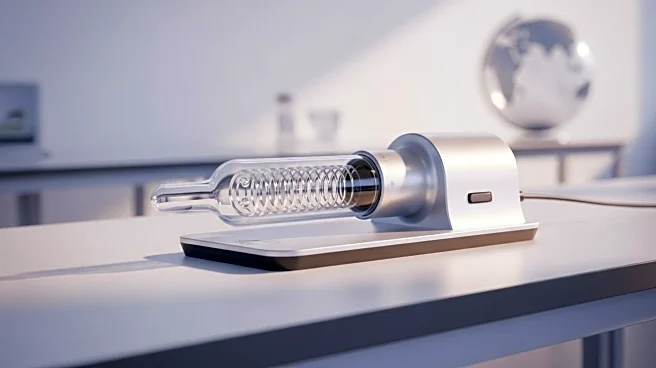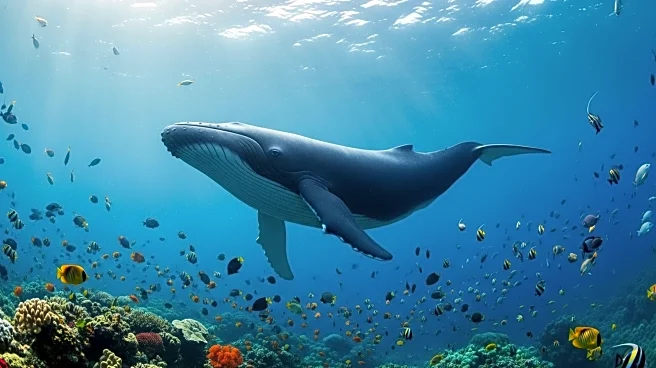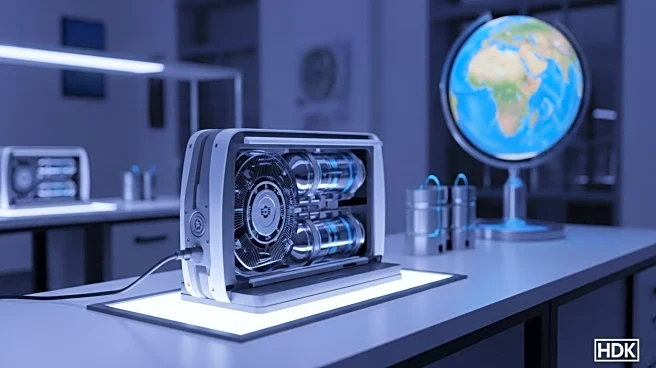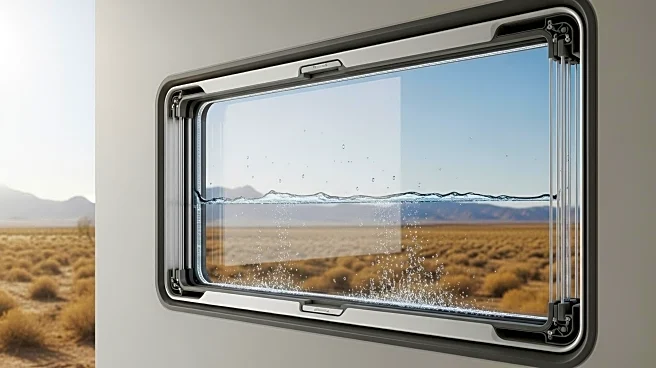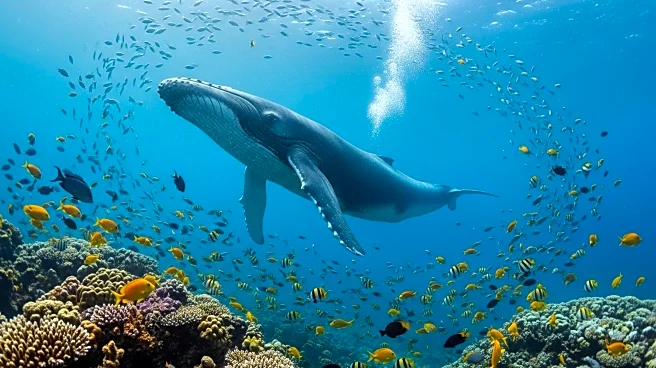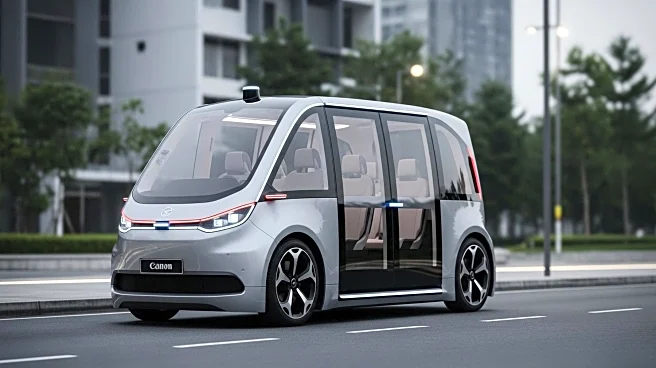What is the story about?
What's Happening?
A team of engineers led by Xuanhe Zhao from the Massachusetts Institute of Technology (MIT) has developed an innovative atmospheric water harvesting device, known as the Atmospheric Water Harvesting Window (AWHW). This device is designed to produce clean drinking water in arid regions by utilizing sunlight as its sole energy source. The core component of the AWHW is a hydrogel made from a hydrophilic polymer network enriched with hygroscopic salts, which absorbs water from the air. The device operates by capturing water vapor overnight and releasing it during the day, condensing it onto glass panels for collection. Tested in Death Valley, the driest region in North America, the AWHW demonstrated effectiveness across varying humidity levels, producing up to 160 milliliters of water per day.
Why It's Important?
The development of the AWHW is significant as it addresses the pressing issue of global water scarcity, which affects over 2 billion people worldwide. By harnessing atmospheric water, the device offers a sustainable solution for regions lacking access to traditional water sources like rivers and lakes. Its self-sustaining design, requiring no electricity, makes it particularly suitable for off-grid areas, potentially improving water security for communities in resource-limited settings. The AWHW's ability to produce potable water without further purification could have a transformative impact on public health and quality of life in water-stressed regions.
What's Next?
The MIT team plans to enhance the efficiency of the AWHW to produce sufficient water for entire households, even in desert climates. Future tests are scheduled in diverse locations, including Morocco and Singapore, to assess the device's performance in different environmental conditions. The team aims to scale up manufacturing and make the technology affordable, ensuring widespread adoption. Collaborations with international researchers are ongoing to refine the design and expand its application globally.
Beyond the Headlines
The AWHW represents a breakthrough in sustainable technology, potentially influencing future innovations in water harvesting. Its design overcomes challenges faced by previous devices, such as salt leakage, by incorporating glycerol to stabilize salts. This advancement not only enhances the device's efficiency but also sets a precedent for environmentally friendly engineering solutions. The project underscores the importance of interdisciplinary collaboration in addressing global challenges, with contributions from researchers across multiple countries.
AI Generated Content
Do you find this article useful?
